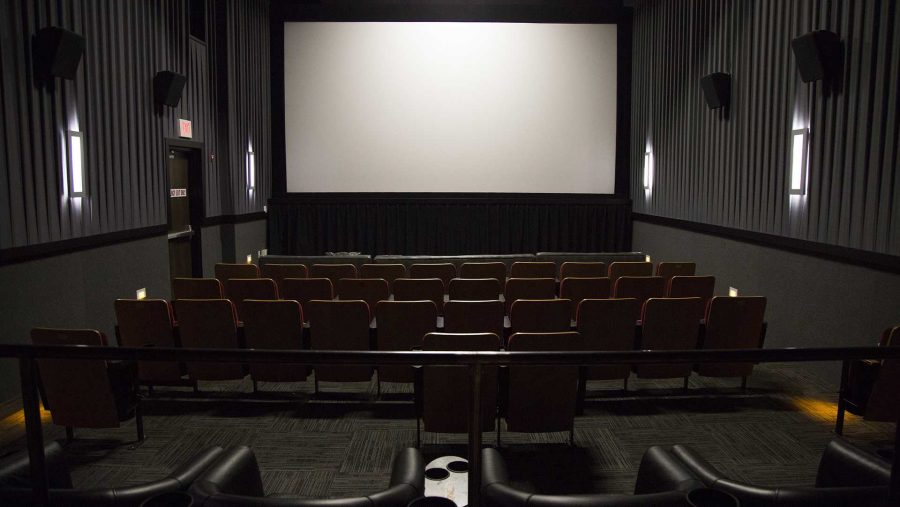Hegde: To screen or not to screen
Hegde discusses the changing societal rules in film with the students in charge of screening movies for the Iowa City Community.
The FilmScene theater screen is shown Dec. 10, 2015.
December 3, 2018
Over Thanksgiving break, I watched the acclaimed movie Sixteen Candles for the first time. The movie has been praised for being a classic, with Molly Ringwald’s authentic portrayal of a frustrated adolescent and Michael Schoeffling playing the dreamboat of a male lead. While — spoiler alert — I got to see a cute happy ending, I also was surprised to find a flurry of problematic undertones, from the mean-spirited jokes pointed at the only Asian character in the film to the many plots that portrayed women as only being useful for men to flaunt to one another.
The controversial themes of Sixteen Candles made me ponder the changing standards of society and how they affect films. There are scenes in movies that can sometimes push past the line of acceptable messages in today’s world, and those films are usually loudly criticized. But what about when it comes to watching these movies again?
After all, many movies that happen to have controversial scenes, as does Sixteen Candles, are also sometimes viewed as timeless and their controversial subplots are dismissed as a being from a “different time.” How do theaters and other film-viewing venues select movies that meet the cultural standards of modern society?
RELATED: Yerington: Comic books are sophisticated literature
Rebecca Fons serves as a programming director for FilmScene, a nonprofit organization that screens films with goals of educating and enriching the Iowa City community. Fons said the organization screens a variety of movies, both international and local, in a plethora of genres. The movie-selection process, especially with older titles and special series, involves numerous committees and group discussions.
When it came to handling movies that could seem problematic, Fons said a core value for FilmScene is to “strive to be a safe, inclusive, and equitable space.” She uses her job to ensure that each time she considers a film for screening, she tries to take into account “both the film’s content and its makers,” she said. It was clear to me very quickly that film selection is a thoughtful process.
“Film is a particularly challenging medium because we have centuries of content and times have changed,” Fons said. She emphasized that while timeless but controversial movies can still be watched and enjoyed, FilmScene aims to “encourage audiences to watch with an informed gaze.”
Dylan Snodgrass, the Campus Activities Board film director, leads a committee that chooses the movies shown at the IMU. He said the selection process focuses on what the audience wants to see, ranging from the most recent blockbusters to popular favorites. When it came to gauging content, he said it is important that those in charge of screening movies stay updated on the general content and opinions of those movies.
“I believe it’s important to have a conversation before showing [a movie],” he said.
Similar to Fons, Snodgrass made it clear that the chosen movie selections should influence the audiences.
“We should show content that will challenge people but also educate them,” he said. “If [we] are going to show a movie that has potential to educate and bring up important questions, we take that advantage and try to educate [ourselves] while doing it.”
In the end, I learned that the people choosing the movies we can watch are just as aware of the changing times as I am.





















